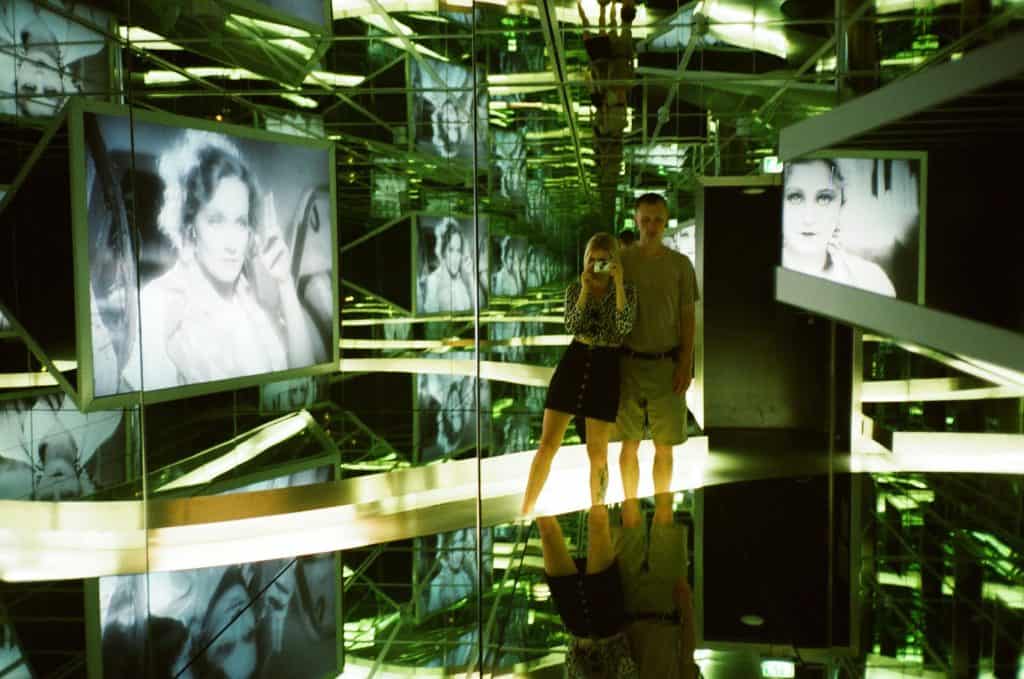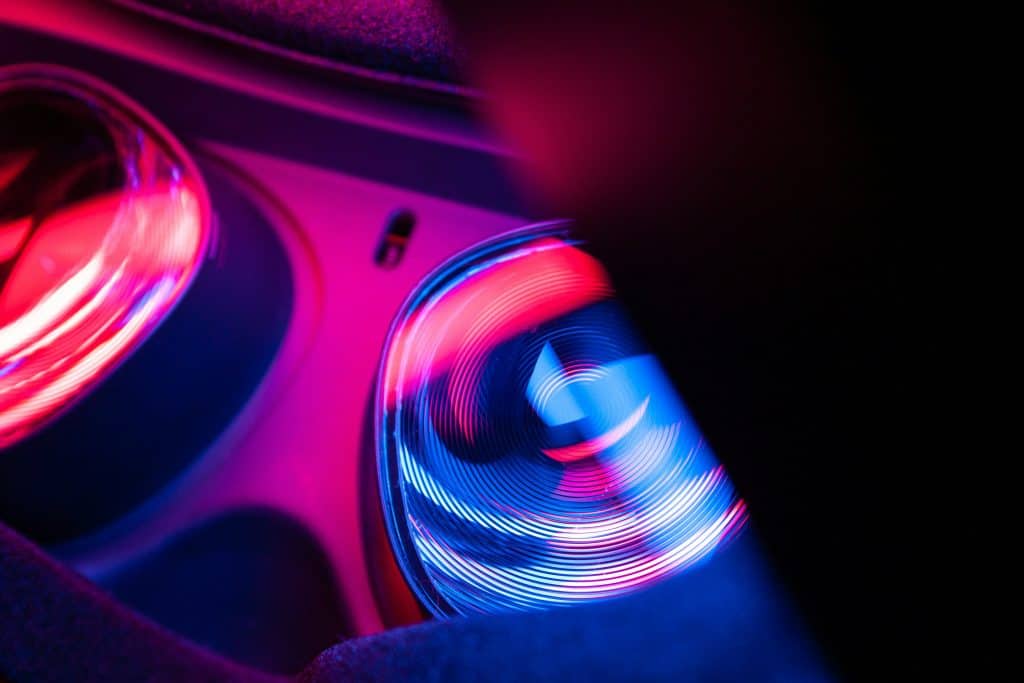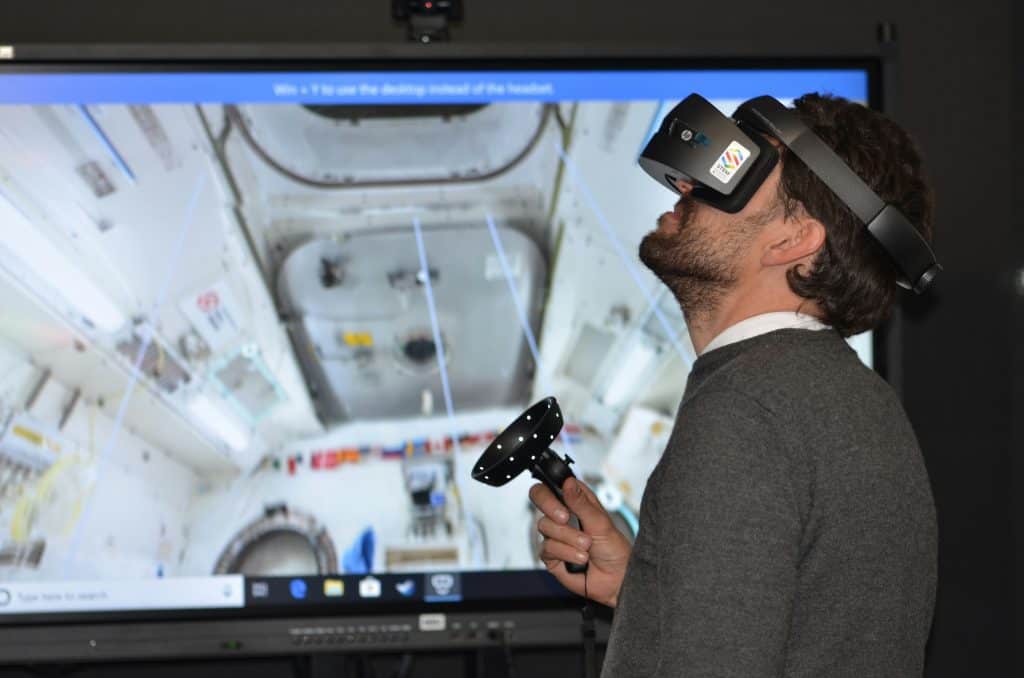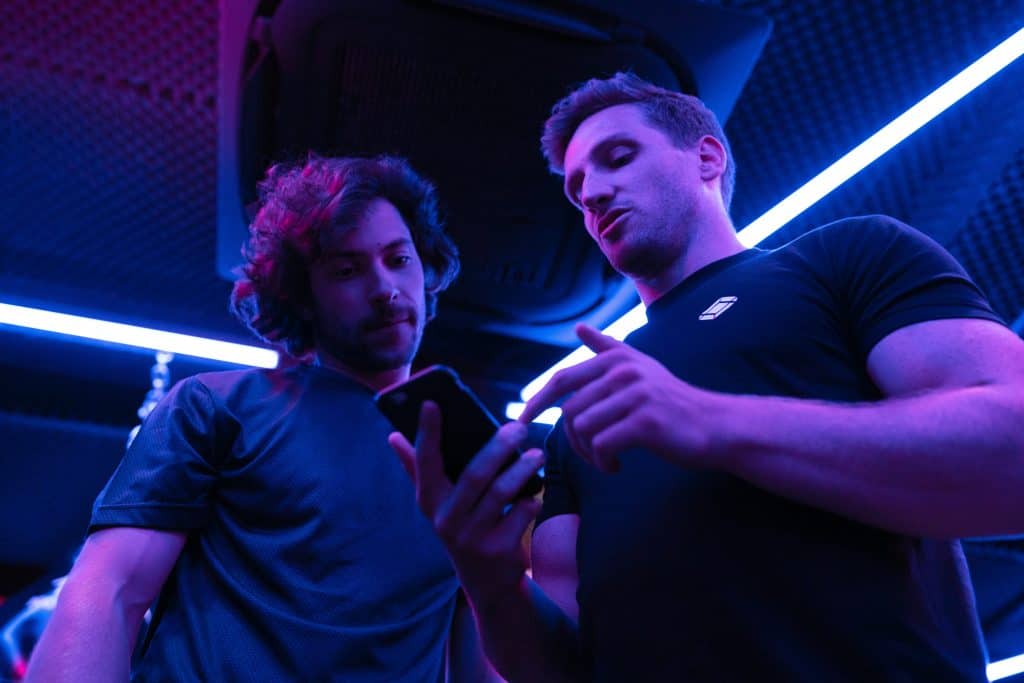
23 Feb Promoting Digital Art Exhibitions in 2024
Virtual reality (VR) stands as a beacon of artistic possibility, transcending mere technological innovation to become a boundless canvas for creative exploration. In this rapidly evolving landscape, VR art exhibitions and interactive experiences challenge conventions, reshaping the very essence of artistic boundaries. Through the lens of VR, artists wield technology to craft immersive experiences that engage, provoke, and inspire in unprecedented ways.
As VR continues to redefine the parameters of artistic expression, creators find themselves at the vanguard of a revolution, harnessing its transformative power to blur the lines between the real and the imagined. In this age of technological enlightenment, VR art becomes more than just spectacle; it becomes a conduit for introspection, empathy, and collective exploration. Together, artists and audiences venture into uncharted territories of imagination, where immersive experiences serve as portals to realms limited only by the depths of human creativity.
Benefits of VR Art Exhibitions

Photo by Darya Sannikova
Immersive and Interactive Experiences
VR art exhibitions revolutionize the traditional notion of spectatorship by immersing viewers directly into the heart of the artwork itself. The delineation between observer and participant becomes increasingly blurred as individuals navigate virtual environments, encountering art elements from diverse angles and perspectives. This transformative experience imbues art appreciation with a sense of personal exploration and discovery, transforming it into a deeply intimate journey for each viewer.
Accessibility and Global Reach
By transcending physical boundaries, VR technology democratizes access to art on a global scale. It liberates exhibitions from the constraints of geography, enabling audiences worldwide to engage with art without concerns about conservation or logistical challenges associated with transporting physical artworks. The dematerialization of art broadens its reach, making it accessible to a more diverse audience and fostering greater inclusivity within the art community.
Creative Freedom and New Artistic Possibilities
VR provides artists with unprecedented freedom to explore and experiment beyond the confines of traditional mediums. Integrating multisensory elements such as sound, haptics, and movement enriches the artistic narrative, allowing for the creation of interactive installations that invite audience participation. This fusion of technology and art results in immersive experiences that defy conventional norms, unlocking new dimensions of creativity and pushing the boundaries of artistic expression.
Challenges and Considerations

Photo by James Yarema
Technological Limitations
Despite the exciting prospects VR offers, it grapples with significant technological limitations that impede its widespread adoption. The cost and accessibility of both hardware and software present formidable barriers, limiting the potential audience and raising concerns about inclusivity within the VR art community. Moreover, the emergence of health issues, such as motion sickness and eye strain, highlights the need to address user comfort and safety to ensure a positive and sustainable VR experience for all.
Artistic Challenges
Converting physical art into immersive digital VR experiences introduces a host of artistic challenges that must be carefully navigated. Preserving the original intent and integrity of the artwork while adapting it to an interactive medium requires meticulous attention to detail. Striking a balance between innovation and authenticity is paramount to prevent the VR experience from devolving into mere spectacle or gimmickry, ensuring that viewers engage with the artwork on a meaningful and substantive level.
Shifting the Role of Curator and Artist
The advent of VR disrupts traditional paradigms of exhibition spaces and curatorial practices, necessitating a reevaluation of the roles played by curators and artists alike. As digital artworks proliferate in the VR landscape, issues surrounding copyright, ownership, and attribution become increasingly complex and contentious. Navigating these legal and ethical considerations is essential to safeguard the rights of creators and ensure fair compensation in the burgeoning digital art market. Moreover, preserving and archiving VR art experiences pose formidable challenges, requiring innovative solutions to ensure their accessibility and longevity for future generations of audiences and scholars alike.

Photo by Laurens Derks
Examples of VR Art Exhibitions and Immersive Digital Art
A multitude of compelling case studies showcases the breadth and depth of successful VR art projects across diverse contexts. Museums and galleries, recognizing the potential of VR to augment traditional exhibitions, have embraced this technology to offer immersive experiences to visitors. Institutions like the Louvre in Paris and the Museum of Modern Art (MoMA) in New York have curated VR exhibitions that transport audiences into virtual replicas of renowned artworks and historical settings, enhancing engagement and understanding.
Simultaneously, independent artists and collectives have leveraged VR platforms to create groundbreaking immersive experiences that defy conventional artistic boundaries. From interactive installations to experimental storytelling, these creators push the limits of VR technology to explore new realms of expression and narrative exploration.
Examining the reception and impact of these VR art projects yields valuable insights into the evolving landscape of digital art. Audience reactions, ranging from awe and wonder to critical reflection, underscore the transformative power of VR to provoke emotional responses and stimulate dialogue. Moreover, the accessibility and global reach afforded by VR democratize art appreciation, enabling individuals from diverse backgrounds to access and engage with cultural heritage and contemporary creativity in unprecedented ways.p
By studying these examples and analyzing audience feedback, stakeholders in the art world gain valuable insights into the potential of VR to redefine artistic expression, exhibition practices, and audience engagement in the digital age. As VR technology continues to evolve and permeate various facets of society, the possibilities for immersive digital art are boundless, offering new avenues for creativity, exploration, and connection in an increasingly interconnected world.
The Future of VR Art
Envisioning the trajectory of VR art leads us to the intersection of this technology with other cutting-edge innovations such as artificial intelligence (AI) and blockchain. The integration of VR with these emerging technologies opens up a realm of exciting possibilities, fundamentally reshaping artistic practice and challenging the conventions of traditional art institutions.
The synergy between VR and AI introduces new dimensions of interactivity and immersion within virtual art environments. AI algorithms can dynamically respond to user inputs and behaviors, creating personalized and adaptive experiences that evolve in real-time. This interactive dialogue between the viewer and the artwork blurs the boundaries between creator and audience, fostering deeper levels of engagement and collaboration in the artistic process.
Furthermore, the incorporation of blockchain technology revolutionizes the way we authenticate, distribute, and monetize digital artworks within the VR landscape. Blockchain’s decentralized ledger ensures transparent and immutable records of ownership and provenance, mitigating concerns about piracy and intellectual property infringement. Smart contracts enable artists to retain greater control over their creations, while also facilitating fair compensation and royalties through microtransactions and tokenization.

Photo by ThisisEngineering RAEng
Conclusion
The emergence of Virtual Reality (VR) in art exhibitions marks a profound shift in artistic expression and audience engagement. VR not only transcends physical limitations but also redefines the relationship between spectator and artwork, offering immersive and interactive experiences that blur traditional boundaries. The benefits of VR art exhibitions, including accessibility, global reach, and creative freedom, underscore its transformative potential in democratizing art and fostering new forms of expression.
However, the journey of VR in the art world is not without its challenges. Technological limitations, artistic considerations, and shifting roles within exhibition spaces pose significant hurdles that must be addressed to ensure the meaningful integration of VR into artistic practice. Moreover, the future of VR art holds promise, with the integration of AI and blockchain opening up new avenues for innovation and collaboration, challenging conventional notions of artistry and curation.
As we navigate this dynamic landscape, it becomes increasingly clear that VR’s potential to redefine the art experience is vast and far-reaching. By embracing technological advancements and embracing experimentation, we can unlock new realms of creativity and exploration, ushering in an era where the boundaries between reality and the virtual dissolve, inviting audiences to embark on a journey of discovery and imagination.
Key Takeaways
Benefits | Challenges |
Immersive and interactive experiences | Technological limitations |
Accessibility and global reach | Artistic challenges |
Creative freedom and new artistic possibilities | Shifting the role of curator and artist |
FAQs
How does VR overcome geographical barriers in art exhibitions?
Virtual Reality (VR) revolutionizes the accessibility of art exhibitions by transcending geographical barriers. Through VR technology, individuals from around the world gain access to art exhibitions without the constraints of physical location. This advancement in accessibility democratizes art consumption, allowing a diverse audience to engage with virtual artworks regardless of their geographical location. By donning VR headsets, users can immerse themselves in virtual galleries, exploring artworks and experiencing exhibitions as if they were physically present, thus expanding the reach and impact of art globally.
What challenges do VR art experiences face in terms of accessibility?
Despite its potential, VR art experiences encounter significant challenges in terms of accessibility. One major obstacle lies in the cost and availability of VR hardware and software. The high price of VR equipment and the technical requirements needed to run VR experiences may limit access for individuals with limited financial resources. Moreover, concerns arise regarding the inclusivity of VR experiences for users with disabilities. Accessibility features must be integrated into VR platforms to ensure that individuals with diverse needs can fully participate in and enjoy virtual art exhibitions.
How does VR impact the role of curators in the art world?
The emergence of VR has a profound impact on the role of curators in the art world. Traditionally, curators oversee physical exhibitions within tangible gallery spaces. However, the advent of VR introduces new paradigms that challenge these traditional notions. Curators now confront the task of curating exhibitions within virtual environments, necessitating a reevaluation of their roles and responsibilities. In the virtual realm, curators must consider factors such as spatial design, user interaction, and technological integration to create immersive and engaging art experiences. As VR continues to evolve, curators play a pivotal role in shaping the future of virtual art exhibitions, navigating the intersection of technology and artistic expression to redefine the boundaries of curatorial practice.
Delve into “The Role of Museums in Cultural Exchange” and analyze how their presentation and curation of art foster understanding, appreciation, and dialogue, transcending boundaries and enriching the collective human experience.

